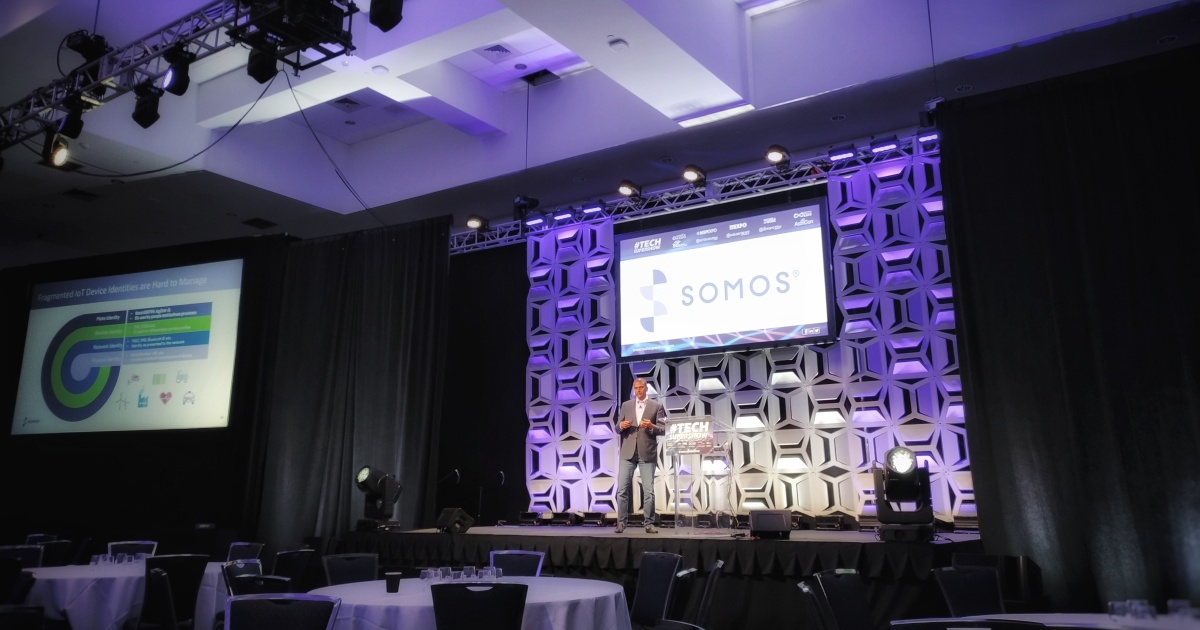
We did it, readers – IoT Evolution Expo took place last week in Fort Lauderdale, Florida, and it was awesome to be there and even see some of you!
That said, we now find ourselves in expo recap mode, so to speak. In that vein, let’s review an important session I was able to attend.
This “Can You Trust the IoT Devices You Use?” Keynote Presentation in the Floridian Ballroom of the Broward County Convention Center was led by Sri Ramachandran, Senior Vice President and Chief Technology Officer for Somos, Inc. Ramachandran, who is responsible for overseeing Somos’ technology strategy and long-term vision, has built up more than two decades of global technology leadership expertise in telecommunications, VoIP, cloud services and, of course, IoT.
Below is a rundown of his IoT trust-focused presentation:
After accruing most of his above-mentioned experience, Ramachandran worked for a smart grid startup that developed a critical piece of IoT equipment that enabled solar integration with an existing grid’s structure. Thereafter, he worked for an IoT service provider designing electronic bracelet technologies, then for a SIM card company where he developed new IoT security layer protocols for SIM cards, and so on. “And as I’ve learned over the years,” Ramachandran noted, “securing IoT devices is challenging. Certainly doable, but very challenging.”
He then touched on the pandemic and how it accelerated IoT security transformation. “It’s been nearly four years since the outbreak of COVID-19, but the accelerations that geared up at that time have yet to slow down,” Ramachandran said. “Needs for remote work capabilities have driven urgencies for IT/IoT deployments – when this kind of haste is fueling things, it can create increased fragmentation, which may magnify new problems even as it fixes old ones.”
So, Ramachandran works to seal IoT vulnerabilities in critical infrastructure; in water utility control facilities, for smart grids, you name it. He and the teams at Somos assess vulnerabilities and put in place immediate patches for issues exploited by bad actors. They empower trusted connections between devices, applications and people, servicing “over 1,800 service providers and managing over 7 billion identities.”
Ramachandran also covered other top-of-mind security risks, like how:
- “40% of all DDoS traffic is generated by IoT devices”
- “60% of attacks to telecom mobile networks are linked to IoT-vulnerable bots scanning for hosts to expand their botnets for use in future attacks”
- “97% of typical Java applications are made up of open source libraries, thus amplifying the ability to inject new flaws”
“Fragmented IoT devices identities can be hard to manage; there are meta, service, network and physical identities to account for,” he added. “especially at a time when 90% of CIOs are concerned that their IoT devices aren’t sufficiently secured, and the average cost of a security breach in the U.S. can total upwards of $9.48 million, and that’s without counting damage done to organizations’ reputations and their future business opportunities.”
Altogether, this is why Somos is building bridges across trust gaps for those involved in IoT; they provide consistent security through regular updates, identity assessment and management (IAM) solutions, guidelines on new cyber standards, and more. (Here, “more” included other news that happened to break while we were at the expo itself: Somos announced SomosID, and IoT IAM service that secures registry for IoT asset owners seeking greater visibility into what they own and install.
“SomosID is not just a solution; it is a paradigm shift in how IoT security is realized and implemented,” Ramachandran concluded. “By providing a detailed inventory of IoT assets and real-time vulnerability notifications, SomosID empowers owners to secure and manage their IoT assets with real confidence.”
Learn more here.
Edited by Alex Passett
This post was originally published on the 3rd party mentioned in the title ofthis site





